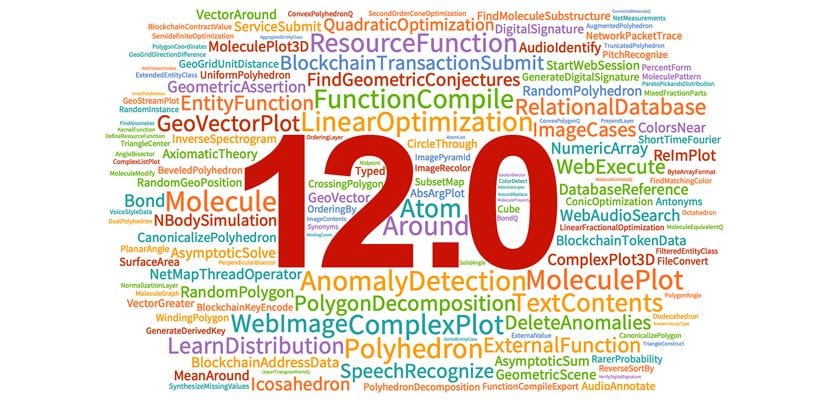
After three decades of continuous research and development since the introduction of the first version of Mathematica, Wolfram Research, the publisher of Mathematica, recently released the latest version of its software formal devoted to algebraic calculations and the creation of programs in scientific circles.
In which comes with its version "Mathematica 12.0" which is also based on a new version of the Wolfram language and includes over a thousand new features and features targeting multi-paradigmatic data science, machine learning, statistics, numerical computing, blockchain manipulation, geometry, networking, and more.
What's new in Mathematica 12.0?
The latest version of Wolfram and Mathematica includes new features in total, there are 278 completely new features affecting almost 103 different domains, as well as thousands of updates.
Mathematica 12 is presented by its designers as one of the most important updates.
En este sentido, Professor Stephen Wolfgang, project manager, said:
"What's new in version 12.0 is that we allow the public to enter the design process behind the scenes, thanks to a live stream of more than 300 hours of my internal design meetings."
Through this new version of Mathematica and the Wolfram language that supports it, Wolfram Research aims to push the limits of what can be done in mathematics.
For example, the software editor mentioned the ComplexPlot3D feature that comes with Mathemaica 12.
This function would solve the problems math and algorithms needed to automate the role tracking process, even fractals, in the complex plane.
In addition, the visualization of complex functions is an important step in the analysis process, and new standardized techniques (such as color functions) have been carefully selected to highlight different characteristics.
Margins of error improvements
Measurements in the real world often have an uncertainty that is represented by values with a certain margin of error.
Despite that earlier versions of Mathematica already knew how to handle "errored numbers" through plugins, version 12.0 from formal Wolfram Research software goes even further with regard to uncertainty calculation operations, its native support.
In this new version 12, the use of polygons is becoming generalized and that now there is a systematic way to specify the holes that they could contain.

Polygon function has benefited of a special treatment intended for make your viewing more convenient and new operations have been assigned to it: PolygonDecomposition that allows, for example, to divide a polygon into convex parts or RandomPolygon.
Other changes
In Wolfram, for a long time it has been easy to interact with the web servers, making use of features like URLExecute and HTTPRequest, $ Cookies, etc.
Version 12 introduces a new capability: now it is possible to use the same language to control a web browser or just get a picture of what a website looks like to a web browser.
The launch of Mathematica version 12.0 (and Wolfram's language) also coincides with Wolfram Research's introduction of the Wolfram Research microcontroller kit, which is expected to define the symbolic specifications from which to automatically generate and deploy the code.
Run autonomously on microcontrollers, typically a microcontroller continuously performs calculations from data from various sensors and sends signals to other components in real time.
Other new features included in version 12.0 of Wolfram (and Mathematica) include:
- The compilation of the Wolfram language into machine code.
- Simulated machine learning environments that combine the power of systems modeling with Wolfram's language manipulation capabilities for reinforcement learning applications.
- Operations related to blockchain and digital contracts (reading, writing and analyzing blockchain transactions, generating and executing smart contracts ...).
- Advanced image processing (improved object identification, facial feature analysis, and feature recognition).
- Connectivity with languages (including Python), programs and external environments such as the Unity game engine.
- Audio processing through neural networks for advanced computing for speech recognition and speech synthesis.